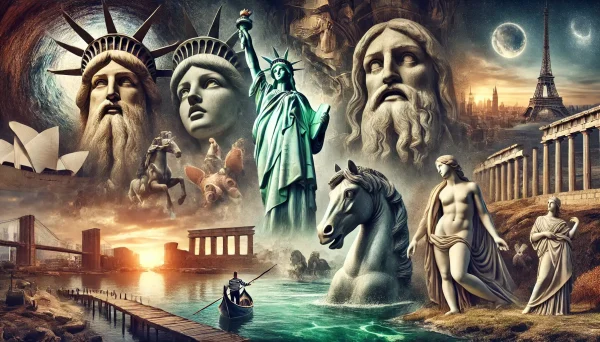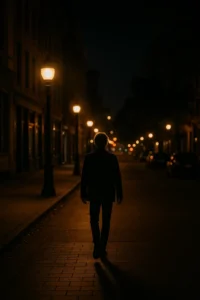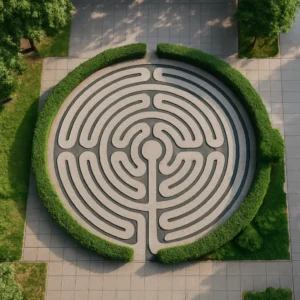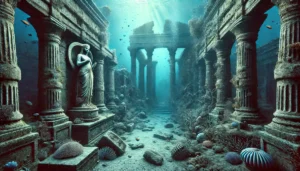Statues and monuments are often seen as symbols of pride, power, or remembrance. We walk past them in city squares, parks, and historical sites, rarely thinking about the deeper stories they might hold. But behind the bronze and stone are tales of mystery, controversy, forgotten heroes, and unexpected events. These landmarks don’t just commemorate—they provoke thought, spark debate, and sometimes reveal surprising chapters of history. Here are some of the world’s most fascinating statues and monuments and the stories that make them unforgettable.
1. The Statue of Liberty – A Symbol with Layers
Known as a beacon of freedom, the Statue of Liberty was a gift from France to the United States in 1886. But few know that its design was originally inspired by a Muslim woman. French sculptor Frédéric Auguste Bartholdi initially planned a statue of an Egyptian peasant woman to stand at the Suez Canal. When that plan fell through, he repurposed the idea into what became Lady Liberty. The statue’s internal structure was designed by Gustave Eiffel—yes, the same man behind the Eiffel Tower.
2. The Little Mermaid – Target of Repeated Attacks
Copenhagen’s beloved Little Mermaid statue, inspired by Hans Christian Andersen’s fairy tale, has endured more than her fair share of controversy. Over the years, she has been decapitated, blown up, painted in protest colors, and even dressed in various costumes. Despite this, the 1.25-meter statue remains a cultural icon and a symbol of resilience.
3. Christ of the Abyss – Underwater Devotion
Located off the coast of San Fruttuoso, Italy, the Christ of the Abyss is a bronze statue of Jesus placed on the seabed in 1954. It was installed to honor divers who lost their lives at sea and to offer spiritual protection to those who explore the underwater world. The statue now stands covered in marine life, creating a surreal and moving sight for scuba divers.
4. The Lincoln Memorial – Hidden Messages
In Washington, D.C., the Lincoln Memorial honors the 16th president of the United States. But there’s more to it than meets the eye. Legend says Lincoln’s hands form the letters “A” and “L” in American Sign Language, as a nod to his interest in education for the deaf. Additionally, on the back of the statue’s head, some visitors claim to see the face of General Robert E. Lee—although this has never been confirmed.
5. The Equestrian Statue of Genghis Khan – Monumental Mystery
Standing at 40 meters tall, this stainless-steel statue in Mongolia depicts Genghis Khan on horseback and is one of the largest equestrian statues in the world. Located in the steppes outside Ulaanbaatar, it marks the place where legend says he found a golden whip. Visitors can climb up through the horse to a viewing deck on the head—a monument as massive and legendary as the man himself.
6. The Hussain Sagar Buddha – Rising from a Lake
In Hyderabad, India, the 18-meter tall statue of Gautama Buddha stands on a rock island in the middle of Hussain Sagar Lake. But its journey there wasn’t smooth. During its installation in 1992, the statue accidentally fell into the lake and remained underwater for two years before being recovered and successfully erected. Today, it’s a symbol of peace and perseverance.
7. The Memorial to the Murdered Jews of Europe – Designed to Disorient
This haunting monument in Berlin consists of 2,711 concrete slabs of varying heights. Designed by architect Peter Eisenman, it invites visitors to walk among them, creating an unsettling and disorienting experience. The design has no official symbolism, intentionally leaving interpretation to the individual. Its power lies in that ambiguity—forcing reflection without explanation.
8. The Angel of the North – Welcomed After Doubt
At 20 meters tall and with a wingspan of 54 meters, the Angel of the North near Newcastle, England, is one of the most recognizable pieces of public art in the UK. When it was announced, locals were skeptical. But over time, the steel sculpture has become beloved, symbolizing strength and transformation in a region once dominated by coal mining and heavy industry.
9. The Broken Chair – Protest in Plain Sight
Outside the United Nations office in Geneva stands a 12-meter-high wooden chair—with a broken leg. This striking sculpture was created to protest landmines and the harm they cause to civilians long after conflicts end. Installed in 1997, it has become a permanent reminder of silent victims and the global struggle for disarmament.
10. Mount Rushmore – Carved in Controversy
While Mount Rushmore is an iconic American symbol, it carries a complicated legacy. The mountain is located in the Black Hills, sacred land to the Lakota Sioux. The monument’s construction erased Native American heritage in the region. Additionally, one of the sculptors, Gutzon Borglum, was associated with white supremacist ideologies. The site remains a powerful yet controversial symbol of American identity.
Conclusion: More Than Stone and Metal
Statues and monuments are not just historical decorations—they’re storytellers. Behind each figure lies a narrative of struggle, triumph, irony, or protest. Some make us proud, others make us question, and many remind us that history is rarely simple. As we walk past them, we’re walking through the layers of human experience—some hidden, some celebrated, all worth remembering.








